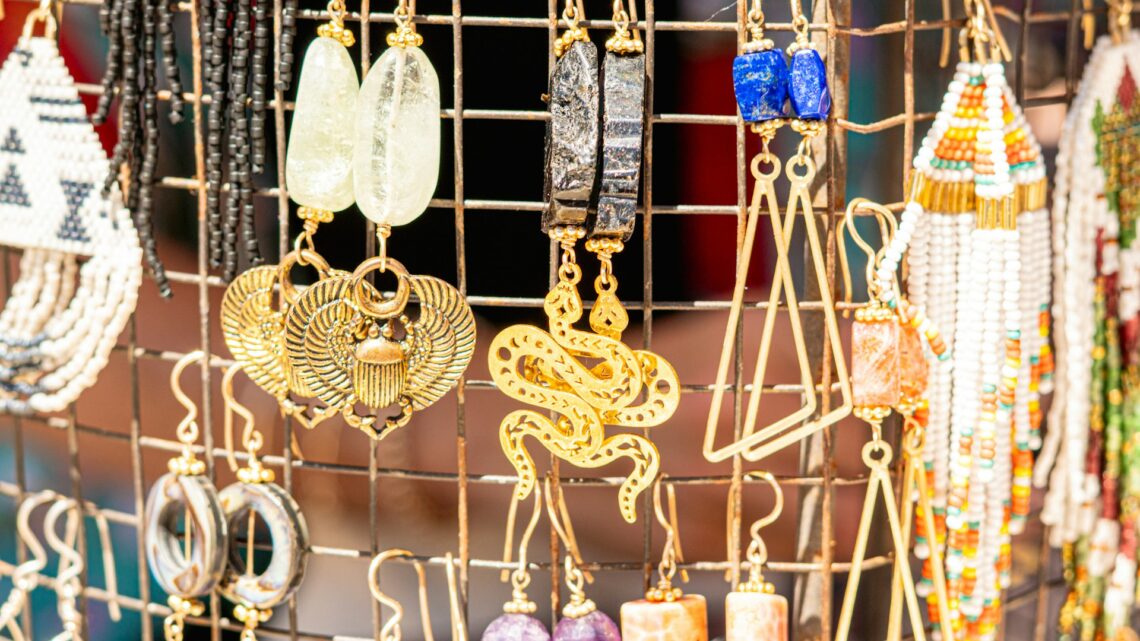Sensitive ears shouldn’t mean sacrificing style. Millions of people experience allergic reactions to jewelry, with earrings being the most common culprit. The itching, swelling, and irritation that follow can turn a beautiful accessory into a painful experience.
Understanding hypoallergenic earrings goes beyond simply avoiding “cheap” jewelry. The science behind earring materials, manufacturing processes, and design elements all play crucial roles in determining whether a pair of earrings will cause an allergic reaction. .
This comprehensive guide explores the essential factors that make earrings truly allergy-proof, helping you make informed decisions for your sensitive ears.
Whether you’ve experienced reactions before or want to prevent them entirely, knowing these key principles will transform your jewelry shopping experience. From metal composition to coating techniques, we’ll examine every aspect that contributes to hypoallergenic design.
Understanding Contact Dermatitis and Jewelry Allergies
Contact dermatitis represents the most common allergic reaction to jewelry. This condition occurs when your skin comes into direct contact with allergens present in earring materials. The immune system recognizes these substances as foreign threats, triggering inflammation and uncomfortable symptoms.
Common Symptoms of Jewelry Allergies
Allergic reactions typically manifest within hours or days of wearing problematic earrings. Symptoms include redness, swelling, itching, and sometimes blistering around the piercing site. Some individuals experience more severe reactions, including infection or permanent scarring, if exposure continues.
Primary Allergens in Jewelry
Nickel stands as the leading cause of jewelry allergies, affecting approximately 10-15% of the population. This metal appears in many jewelry alloys, even those marketed as “hypoallergenic.” Other common allergens include cobalt, chromium, and certain chemical compounds used in jewelry finishes.
The Science Behind Truly Safe Earring Materials
Creating allergy proof earrings requires careful material selection and understanding of metallurgy. Not all metals labeled as hypoallergenic offer the same level of protection for sensitive individuals.
Titanium: The Gold Standard for Sensitive Skin
Medical-grade titanium provides exceptional biocompatibility, making it ideal for sensitive ears. This material resists corrosion and contains no nickel, ensuring minimal risk of allergic reactions. Surgical implants frequently use titanium due to its safety profile and durability.
Surgical Stainless Steel Considerations
While surgical stainless steel appears in many hypoallergenic jewelry collections, quality varies significantly.
The highest grade (316LVM) contains the lowest nickel content, but some individuals with severe nickel allergies may still experience reactions. This website often features stainless steel options, but understanding the specific grade remains crucial.
Precious Metals and Purity Standards
Pure gold (24 karat) rarely causes allergic reactions, but its softness makes it impractical for everyday jewelry. Lower karat gold alloys contain varying amounts of nickel and other allergens. Platinum offers excellent hypoallergenic properties but comes with a higher price point.
Manufacturing Processes That Impact Hypoallergenic Properties
The production methods used to create earrings significantly influence their hypoallergenic qualities. Even safe base materials can become problematic if improper manufacturing techniques introduce allergens.
Coating and Plating Concerns
Many jewelry pieces receive decorative coatings or plating that may contain allergens. Nickel plating, commonly used for its durability and shine, can cause reactions even when applied over safe base metals. Quality hypoallergenic design avoids these problematic surface treatments.
Welding and Soldering Considerations
Joining techniques used in earring construction can introduce allergens through solder materials. Lead-free, nickel-free solders ensure the finished product maintains its hypoallergenic properties throughout the entire piece.
Design Elements That Enhance Hypoallergenic Performance
Beyond material selection, specific design choices contribute to earring safety and comfort for sensitive individuals.
Post and Backing Materials
Earring posts require special attention since they remain in prolonged contact with pierced skin. Titanium or surgical steel posts provide the safest options. Backing materials should match the post composition to prevent galvanic reactions between dissimilar metals.
Surface Finish and Texture
Smooth, polished surfaces reduce bacteria accumulation and skin irritation compared to rough or porous textures. Some hypoallergenic design principles incorporate antimicrobial properties through specific surface treatments that don’t compromise safety.
Weight and Pressure Distribution
Heavy earrings can cause mechanical irritation even when made from hypoallergenic materials. Proper weight distribution and comfortable backing design prevent excessive pressure on sensitive piercing sites.
Certification and Testing Standards
Reliable hypoallergenic claims require proper testing and certification from recognized organizations. Understanding these standards helps consumers identify genuinely safe products.
REACH Compliance and European Standards
The European Union’s REACH regulation sets strict limits on nickel content in jewelry. Products meeting these standards display appropriate certification marks and documentation. This comprehensive testing ensures consumer safety across diverse populations.
Independent Laboratory Testing
Reputable manufacturers invest in independent laboratory analysis to verify their hypoallergenic claims. These tests measure allergen content and confirm compliance with international safety standards. Look for specific test results rather than generic marketing claims.
Proper Care and Maintenance for Hypoallergenic Earrings
Even the safest earring materials require appropriate care to maintain their hypoallergenic properties over time.
Cleaning Protocols
Regular cleaning prevents bacteria buildup and removes substances that could irritate. Use gentle, fragrance-free cleaners specifically designed for jewelry. Avoid harsh chemicals that might damage protective coatings or surface treatments.
Storage Considerations
Proper storage prevents contamination and oxidation that could compromise hypoallergenic properties. Individual storage compartments prevent different metals from coming into contact and potentially causing reactions.
Replacement Timing
Even high-quality hypoallergenic earrings eventually require replacement. Worn or damaged jewelry may lose its protective properties, potentially exposing sensitive skin to allergens. Monitor your earrings regularly for signs of wear or deterioration.
Making Smart Choices for Sensitive Ears
Understanding these fundamental principles empowers you to select truly hypoallergenic earrings that combine safety with style. Focus on verified materials, reputable manufacturers, and proper certification rather than marketing claims alone.
Remember that individual sensitivities vary, and what works for one person may not suit another. Start with the safest materials like medical-grade titanium and gradually expand your options as you learn about your specific tolerances.
Investing in quality hypoallergenic earrings protects your health while ensuring you can enjoy beautiful jewelry without compromise. Your sensitive ears deserve accessories that enhance rather than irritate, making informed choices essential for long-term comfort and style.







